Current Features
Helping the Unseen
USF faculty, students and alumni apply their expertise and time to stand up for the vulnerable
By Rachel Pleasant, '03 and '16
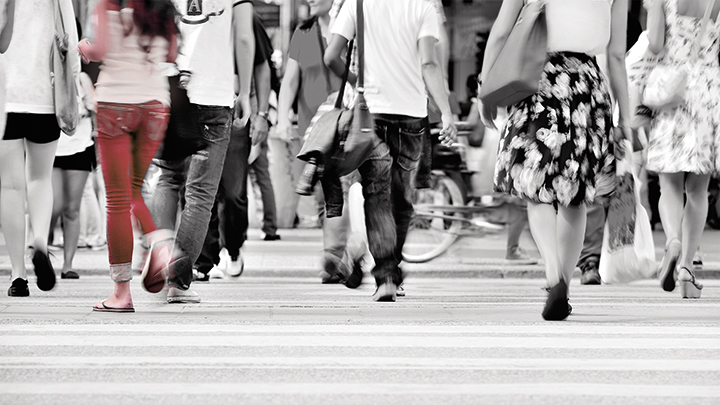
They're all around us. In the waiting room at our doctor's office, in our classrooms, maybe even right next door.
Yet, despite their prevalence, refugees and victims of human trafficking often remain unseen, even hidden, in our communities.
Often referred to collectively as "vulnerable populations," refugees and human trafficking victims endure unthinkable hardships, face unimaginable challenges, and present complex issues that University of South Florida System researchers are working to address.
Their findings are informing government agencies and aid organizations, building awareness and a sense of responsibility among the public, and ultimately, easing the vulnerability of these most vulnerable populations.
USF faculty, students and alumni are also well represented among those in the Tampa Bay region volunteering their time and expertise to welcome and support persons forced to flee their homes due to civil strife, systematic violations of human rights or disasters.
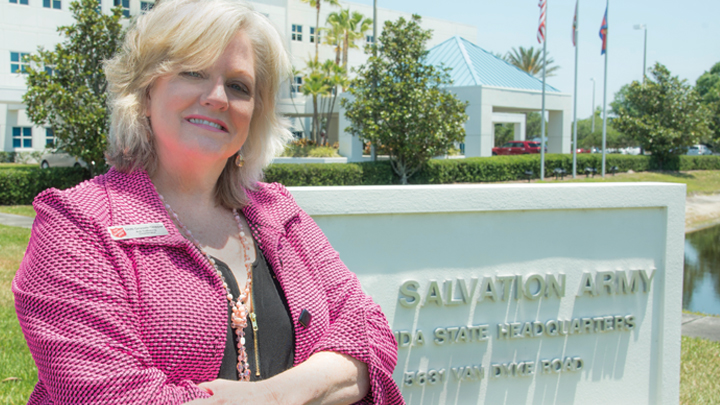
Personal Take: Almost 30 years ago I had my first experience with human trafficking. I was teaching self-esteem classes, and there was a 13-year-old girl in my class. One day, she asked if she could start bringing her 4-year-old sister. I agreed. There was something just not right about the little sister. I just knew something was wrong. I was so conflicted that I reported it. The authorities found that the girls' grandmother was trafficking them. It changed my life and inspired my life's work. My message to others is if you see something or feel something in your gut, report it. You could save a life.
— Dotti Groover-Skipper, '92, anti-trafficking coordinator for the Salvation Army's Florida divisional headquarters
Identifying trafficking risk factors and entrapment schemes
The international labour organization, a U.N. Agency, estimates there are 21 million human trafficking victims worldwide, who supply an industry worth $150 billion annually. According to the National Human Trafficking Resource Center Hotline, Florida had the third-highest number of cases of human trafficking in 2016, with 550. Of those, 84 percent involved women; 30 percent involved minors. To be clear, human trafficking happens everywhere, but within the state, one of the areas with the most reported activity is Tampa Bay.
Dottie Groover-Skipper and other experts say that for all that is known about human trafficking, there is still much to learn.
How do traffickers find their victims and who is most at risk?
How can trafficking be prevented?
Why do victims who have been rescued often return to their traffickers?
These are the questions USF researchers are working to answer.
USF St. Petersburg assistant professor of criminology Joan Reid, '04, MA '04 and PhD '10, has identified factors that put individuals at risk of being trafficked as well as the strategies traffickers use to ensnare their victims.
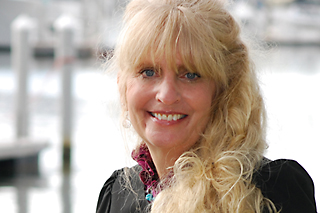
Reid is now using her data to develop materials that will raise awareness among teens, empowering them to identify warning signs and take appropriate steps to prevent trafficking. Earlier this year, she presented her research to the Florida Statewide Council on Human Trafficking; Attorney General Pam Bondi chairs the 15-member committee that includes Groover-Skipper.
Reid's extensive review of human trafficking cases in Florida, published earlier this year in the American Journal of Public Health, found that sexual abuse is the strongest predictor of human trafficking among both underage males and females, but neglect, exposure to family violence, and emotional abuse were also predictive for one or both sexes.
Disturbingly, Reid also found that females with intellectual disabilities are especially at risk.
"The percentage of girls with intellectual disabilities among sex trafficking victims was 30 percent, which is significant because only 1 to 3 percent of the general population has an intellectual disability," Reid said.
"Among girls who have intellectual disabilities, there is often a lack of sexual education. They don't have enough awareness of sex to understand the difference between sex and romance, a boyfriend and a john. They are very easy to manipulate."
Even children who aren't intellectually disabled can easily fall prey to trafficking schemes, Reid says, because traffickers are adept at identifying and exploiting weaknesses of any kind.
Her research revealed traffickers begin relationships with their victims by offering them what they want most. For victims who come from abusive or broken homes, that might be love and attention. For victims who come from poverty, that could be food, clothes, or a cell phone. For victims seeking to belong, it could be friendship; traffickers often use young girls to recruit new victims.
Once they've endeared themselves to and gained the trust of their victims, traffickers begin to shift the relationship.
Traffickers "normalize sex," Reid found, by exposing their victims to pornography, taking sexually explicit photos of them, or joking with them about prostitution. They give their victims drugs or move them away from their families and friends, thereby deepening the victim's reliance on the trafficker.
Then the trafficker demands that the victim begin making money to repay his or her generosity. The person who first seemed to be a friend has morphed into a pimp.
"One of the traffickers in my research was quoted as saying, 'If you promise them heaven, they'll follow you to hell,'" Reid says.
As victims endure the horrors of human trafficking, the relationship with their trafficker shifts yet again.
"There is trauma bonding that happens between the trafficker and the victim. Many victims will develop Stockholm syndrome, meaning that even after all they've been through, they still trust and feel affection for their trafficker," Reid says.
Reconceptualizing traffickers and rescue
The emotional ties between traffickers and the trafficked is at the heart of research assistant sociology professor Elizabeth Hordge-Freeman, PhD, is conducting with "adopted daughters" in Brazil.
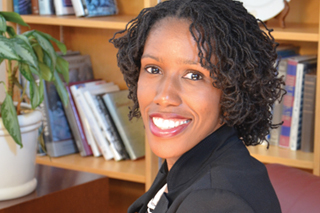
"I'm talking about women, largely black women who are poor, who have been 'taken in' by wealthy families under the guise of adoption, without any formal legal documentation or transfer of guardianship. They are taken in with the promise that they'll be well educated and have opportunity. Sometimes that happens, but many times it doesn't," Hordge-Freeman says.
Instead, "adopted daughters" often live in slave-like conditions. They spend their days cooking, cleaning, and caring for the family's children, while receiving little to no pay and enduring physical and emotional abuse. Many are not allowed to attend school, even as the children they raise go on to become doctors and lawyers.
Most women in Hordge-Freeman's Fulbright-funded study are in their 50s and 60s. Several were "adopted" as small children and some have few, if any, memories of their biological families. However, one woman is only 19, proving the "adopted daughters" problem persists even today.
Dire as the conditions with their "adoptive" families prove to be, even when given the option to leave, most women in Hordge-Freeman's study refuse. If they do leave, they soon return.
"They stay for both structural and individual reasons. Without education, limited social networks, and lack of economic self-sufficiency, their survival outside of these families would be difficult. However, there is also an important individual reason that is linked to affective ties. In some cases, they have raised three generations of the same family, and they don't have families of their own. All their networks are completely connected to this one family," she says.
"The women realize they're being exploited, but they feel they belong with this family."
Hordge-Freeman, whose forthcoming book on Brazil's "adopted daughters" will be titled Second Class Daughters: Informal Adoptions as Neo-Slavery in Brazil, is now applying her work in Brazil to American trafficking victims. One of the most glaring similarities, she said, is the bond between victims and perpetrators. The affective ties that exist between the two sides hinder rescue efforts.
"In many cases, the victims may actually return to their traffickers as a result of practical economic considerations, difficulties in reintegrating into society, and, or, due to the affective ties to the trafficker," she says.
Helping victims successfully transition out of their situations, Hordge-Freeman said, will require long-term, trauma-centered support services and therapy to fulfill whatever needs the trafficker was meeting.
Hordge-Freeman's research will help rescuers better understand and assist victims.
Groover-Skipper, who says she and the trafficked prefer to use the word survivor rather than victim, works in resourcing, training and expanding the Salvation Army's shelter and housing options for trafficking survivors and helping communities create their own programs. She agrees that human trafficking survivors require extensive, multifaceted support services.
"The real work begins after the rescue. The survivors need mental health services. Many suffer from post-traumatic stress disorder. They lack employability and life skills. Those who have been trafficked since they were children have trouble even making small decisions, because they've always had someone telling them what to do. I've seen them struggle to choose between yellow and green bed sheets," she says.
Research-based trafficking prevention and intervention
Because trafficking victims will forever bear the psychological scars of their abuse, Groover-Skipper said prevention and early intervention are imperative. She recently worked with the U.S. Department of Homeland Security to train strip club owners to identify signs of human trafficking.
Internet safety is an important component of human trafficking prevention and a research focus of Assistant Professor of Instructional Technology Nathan Fisk, PhD. The internet, he said, is much more effective as a forum for marketing the "services" of human trafficking victims than it is for luring victims. Nonetheless, online predators do pose real dangers to children and teenagers — especially when children and teens are struggling with problems in their offline lives.
"There really is no difference in our online and offline lives," said Fisk, a member of the first cohort of Fulbright Cybersecurity scholars. "The kids most likely to be victims online are the ones who feel they have no one to talk to offline."
Fisk said what the shopping mall and roller rink were to previous generations, the internet is to today's children. It's where they meet and socialize with friends, where they feel most like themselves.
His studies have found that parents and caregivers should view internet use as an indicator of their child's overall wellbeing.
"If your child is disappearing online for long hours at a time, and much longer than he or she used to, do you know why? Have you tried to engage them? The healthier our children are offline, the less susceptible they are online," he says.
Assistant Professor of Criminology Bryanna Fox, PhD, a former FBI agent, researches the role of social media in human trafficking investigations. She and graduate student Michelle Jeanis have developed trainings for Tampa Bay law enforcement agencies on how to use social networks to raise public awareness of missing persons potentially at risk of being trafficked.
"Social media is the milk carton of the 21st century," Fox says.
Fox, Jeanis and a team of undergraduate students are also currently examining data from NamUs, the National Missing and Unidentified Persons System, and the Doe Network, to develop typologies of missing persons, including traits of those who have become trafficking victims, which will aid law enforcement agents in their investigations.
As for intervention, health care practitioners play a crucial role, says Vinita Kiluk, MD, assistant professor of general pediatrics at USF Health Morsani College of Medicine. She conducts trainings for medical students, residents and experienced physicians on trafficking. Telltale signs they should be watching for, Kiluk said: avoidance of eye contact, tattoos of barcodes or dollar signs, and domineering family members or friends who speak on the patients' behalf.
"Traffickers aren't going to bring their victims to the doctor until the situation has grown very serious. Say the victim has asthma, the trafficker will try to treat that at home, with cough medicine, or anything he or she thinks might help, before they come to the doctor," Kiluk says.
"That's why it's so important for physicians to be aware and sensitive to these warning signs. If they don't help then, they might not get another chance."
Medical students who volunteer at USF's BRIDGE Clinic learn about human trafficking not only in their medical school coursework but also during an orientation session at the start of their volunteer service. They're also trained to ask new patients about their backgrounds, including any history of rape or other trauma that might signal they are being trafficked, said Lucy Guerra, MD, a faculty advisor at the clinic.
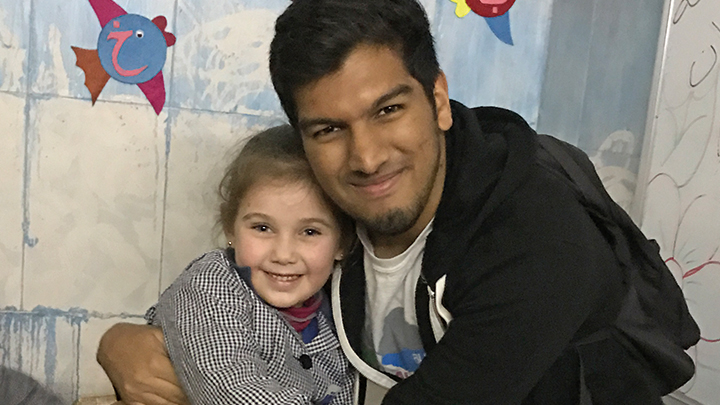
Personal Take: Every day, I would watch the news about the Syrian refugee crisis. One day, I said to myself, 'I have to do something about this.' I came up with a plan, convinced my parents, wiped out my bank account, and bought a ticket to Greece. I raised $12,000 — $2,000 more than my goal— on social media before I left. I arrived at Lesvos on Dec. 31, 2016. Lesvos is a Greek island and the site of a Syrian refugee camp. The people arriving there have paid smugglers to take them across the Aegean Sea. They make the trip even in the worst conditions, because it is their only chance of escaping the violence at home. They are freezing and soaking wet when they arrive. I remember my shoes got wet while I was helping refugees off one of the boats, and I thought, 'I need to buy some boots.' The refugees have left everything behind. They can't simply buy a new pair of boots. Later, I made a video of myself walking through an area of Syria that had been destroyed. I realized that none of the refugees wanted to leave. They didn't even know where they were going. They only knew they had to leave.
— Sameer Jagani, graduate student in Medical Science, has raised more than $100,000 to aid Syrian refugees
Humanizing the refugee experience through education
In 2016, the Florida Department of Children and Families reported Hillsborough County accepted 5,084 refugees. Only Miami-Dade, with 41,185, accepted more refugees. Statewide, the majority of refugees are from Cuba, but other top countries of origin include Afghanistan, Burma, Colombia, the Democratic Republic of Congo, Haiti, Iraq and Syria.
Graduate student Sameer Jagani has seen firsthand the desperation that leads refugees to flee their countries — and the gratitude they feel when they are accepted elsewhere. But for most people, the refugee experience is shrouded in mystery and misconception.
USF researchers are working to change that because, they say, understanding is central to the successful integration of refugees into American society.
"Refugees leave their countries because of war, terrorism, or threats against themselves or their families. They leave because it's either leave or be imprisoned, tortured or killed," said Jody McBrien, PhD, an associate professor in the School of Education at USF Sarasota-Manatee whose research focuses on refugee students.
"So many people misunderstand the definition of a refugee. They often think refugees are here illegally or that they pose a threat to society. Research and policy show that such beliefs are false."
In educational settings, where McBrien has concentrated her research, the language barrier poses the greatest challenge for refugees, but a close second is a lack of integration.
The more support refugee students receive, for instance through after-school programs and athletics, the more successful they will be and the more they can enrich the educational experiences of other students.
"The more compassion and understanding refugee students are shown, the better they can help other students understand the refugee experience," McBrien said. "We can start dispelling some of the stereotypes surrounding refugees in our classrooms."
McBrien uses her research in her classes at USF Sarasota-Manatee, preparing a new generation of educators to be positive influences in the lives of refugee children.
Putting research into action
McBrien's research has shown the power of connection and community for refugees, and Elizabeth Dunn, '07, '08 and MPH '11, assistant to the director of the Global Disaster Management, Humanitarian Relief, and Homeland Security program in the USF College of Public Health and an adjunct faculty member, sees the difference it makes every day.
About 10 years ago, as an undergraduate student majoring in marine biology at USF, Dunn was required to complete an interview with someone with whom she had virtually nothing in common. She chose to interview a Bosnian refugee.
"It made me think about when I was 8. I thought I had problems, but they were nothing compared to what he went through. That interview led me to change my career path," Dunn said.
Dunn would go on to earn undergraduate degrees in economics and international studies, and later a Master of Public Health from USF. She's since worked with post-conflict recovery efforts in countries around the world, as well as here in the United States as a volunteer with the American Red Cross.
Through the Red Cross, Dunn learned of the Tampa Bay Refugee Task Force, an organization headed by USF alumna Janet Blair that unites refugee service providers. Dunn serves on the Task Force's mental health and youth subcommittees.
Dunn has found numerous ways to bridge her work on campus and in the community, and in doing so has inspired her students to get involved in refugee assistance as well.
In fall 2016, in response to slashed budgets for programs for refugee children, Dunn and her students, as well as students from the USF College of Education, with assistance from the Task Force, initiated an after-school program at the University Area Community Development Center in Tampa and a morning program at Hunter's Green Elementary School in New Tampa. Dunn's students have since created a nonprofit organization and a youth soccer program. They're serving nearly 150 refugee children.
Dunn has observed positive changes both within the refugee children and her students.
"The refugees have survived. They are resilient. They just need to be empowered to succeed. They want to work and make a difference, and do things to make the world a better place. With the right support, I've seen that happen so many times.
"I see my own students develop a world awareness and a selflessness. They're putting a human face to the population we're studying. They're seeing refugee children as kids who just want to play soccer because it's a beautiful day outside. Many are choosing to go to work in the field, with the State Department or with refugee camps overseas."
Jagani is one such student whose career aspirations have changed because of his interactions with refugees. Before entering medical school, he plans to earn a Master of Public Health with a concentration in Global Disaster Management and Humanitarian Relief. He continues to spread awareness of the refugee situation in Syria, receive donations through his website, youcaring.com/soaw, and plans to return to the country to volunteer with relief efforts.
Human trafficking victims and refugees as lessons in human rights
Human trafficking and refugee resettlement are issues in and of themselves, but crossovers do occur. It's not hard to imagine scenarios in which refugees, struggling to learn a new language and way of life, could be taken advantage of by labor traffickers, for instance. Dunn herself has worked with refugees in such situations.
Whether considered separately or combined, human trafficking and refugee resettlement are central to the study of human rights, says Rachel May, PhD, associate professor of Latin American Studies and director of USF's Institute for the Study of Latin America and the Caribbean.
May, who in 2014 helped to organize a landmark conference on human trafficking through a partnership with U.S. Southern Command, said trafficking and refugee resettlement are frequent topics of classroom discussion and, increasingly, the subjects of master's theses. An understanding of both are critical for all students, regardless their intended field of study, she says.
"The antislavery movement is central to how we define human rights ... as a nation we have an obligation to the international community to protect refugees. It is fundamental to international law and human rights," she says.
"These are issues that can be seen through an epidemiological lens and addressed through an interdisciplinary approach. These are complex issues that require the kind of complex thinking that researchers and students across the USF community are engaging in every day."